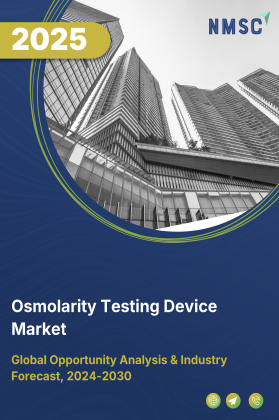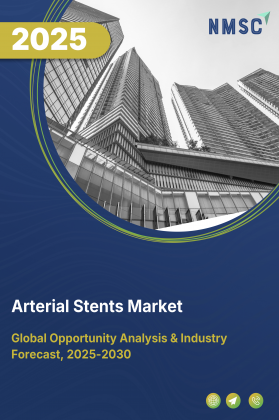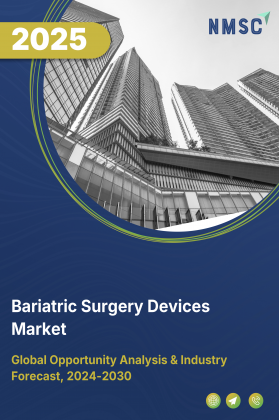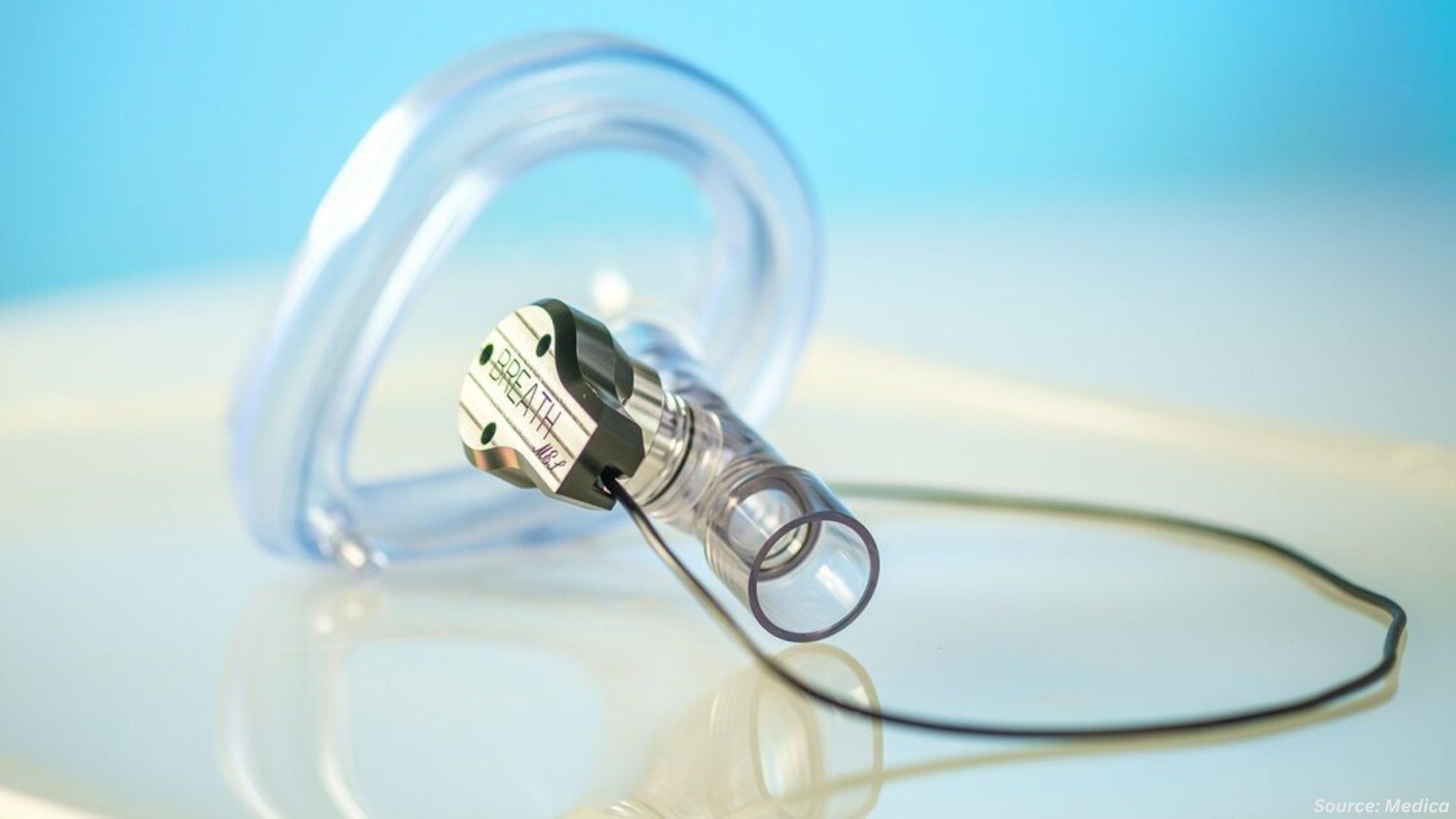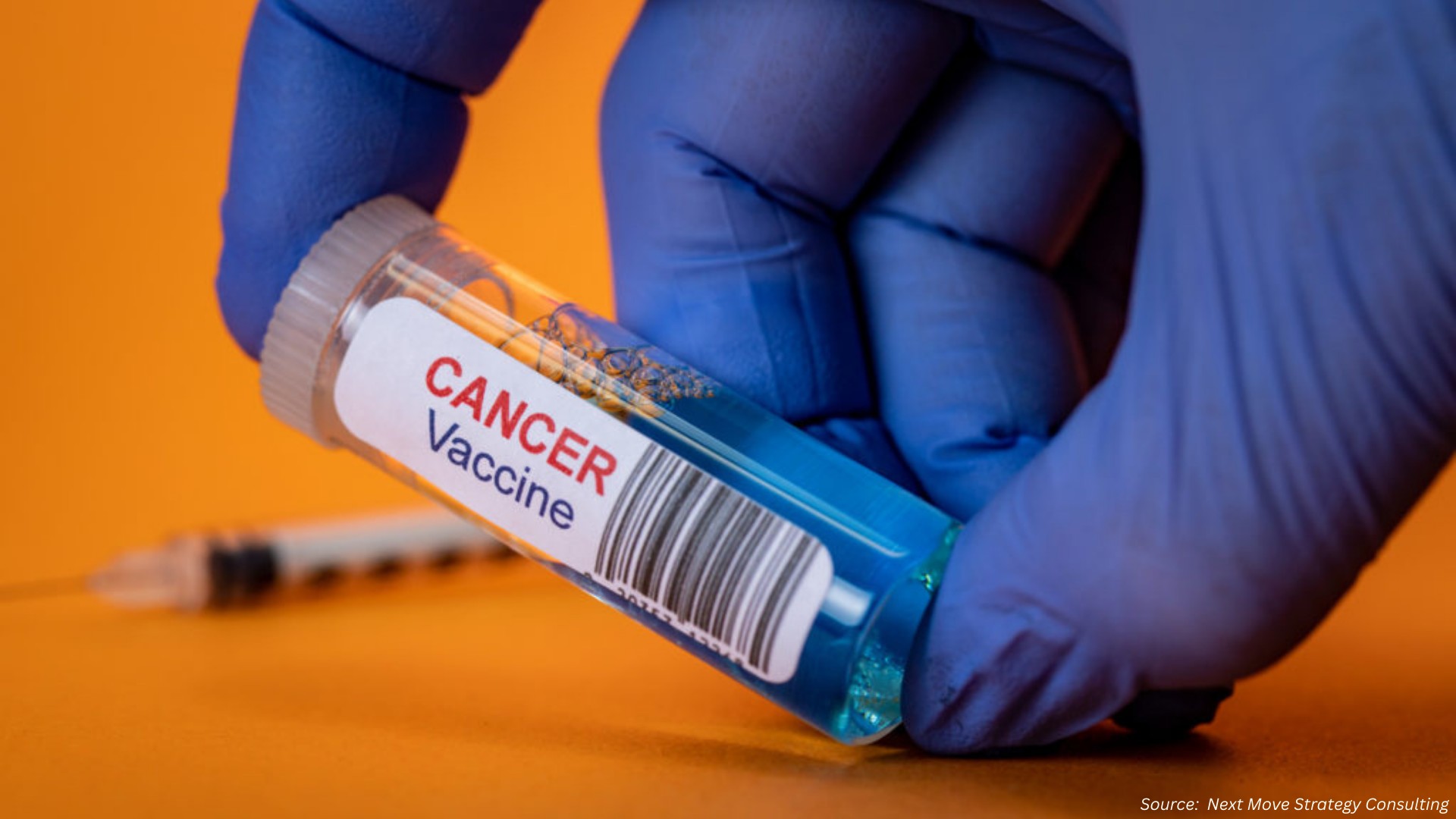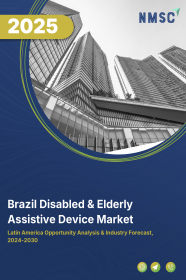
Brazil Disabled & Elderly Assistive Device Market by Type (Mobility & Transfer Assistance, Hearing Impairments, Visual Impairments, and Daily Living & Personal Care), by End User (Home Care, Institutional Care, Community & Outpatient, and Other)– Opportunity Analysis and Industry Forecast, 2024–2030.
Industry: Healthcare | Publish Date: 09-Sep-2025 | No of Pages: 133 | No. of Tables: 154 | No. of Figures: 99 | Format: PDF | Report Code : HC1082
Market Definition
The Brazil Disabled & Elderly Assistive Device Market size was valued at USD 725.94 million in 2023, and is predicted to reach USD 1010.90 million by 2030, with a CAGR of 4.72% from 2024 to 2030. The assistive device industry plays a crucial role in enhancing the lives of individuals with disabilities and older adults by providing them with specialized tools and systems that foster independence and fulfillment. This industry encompasses a diverse spectrum of devices and software solutions meticulously designed to address physical, sensory, cognitive, and developmental limitations.
Operating at the intersection of healthcare, technology, and accessibility, it gives rise to groundbreaking solutions such as mobility aids, communication devices, and home automation systems. Driven by an aging population, rapid technological advancements, and evolving regulatory landscapes, the assistive device industry prioritizes inclusivity and continuously adapts to meet the ever-changing needs of its diverse user base.
Accelerating Population Aging and Chronic Health Conditions Elevate Long-Term Assistive Needs
Brazil is experiencing a structural demographic shift marked by rapidly increasing life expectancy and declining fertility rates, leading to a growing share of elderly citizens. At the same time, chronic non-communicable diseases such as stroke, arthritis, and diabetes are becoming more widespread, particularly among the elderly. This dual trend is significantly increasing the demand for assistive technologies that promote functional independence, prevent injury, and reduce caregiver burden. From basic mobility aids to advanced communication and home-adaptive devices, assistive solutions are becoming indispensable in public health strategy, especially as policymakers emphasize aging in place and decentralized care delivery.
National Push for Digital Health Integration Boosts Demand for Smart and Connected Assistive Technologies
The Brazilian government's strong commitment to digital healthcare modernization is transforming the landscape for assistive device innovation. Programs under the National Digital Health Strategy and the expansion of Brazil’s Health Data Network are driving widespread adoption of remote monitoring, telecare, and AI-enhanced services. This infrastructure enables seamless integration of smart assistive technologies—such as fall detection wearables, app-linked mobility aids, and voice-controlled home systems—into both public and private eldercare models. As more municipalities deploy these tech-enabled care solutions, the market for customized, connected, and scalable assistive devices is expanding rapidly, especially in urban and semi-urban regions.
Complex Regulatory Framework and Lengthy Approval Processes Restrict Market Entry
Despite Brazil’s progress in modernizing medical device regulation with ANVISA’s Resolution 751/2022, the approval landscape remains intricate and time‑consuming for assistive device innovations. High-risk products (risk Class III/IV), including many advanced mobility aids and monitoring systems, must undergo full registration—requiring clinical evidence, extensive technical dossiers, INMETRO certification, and BGMP or MDSAP audits. The process can stretch for 12 months or more, delaying market entry and limiting agility.
At the same time, Class I–II devices follow a simplified notification route; however, any device labeled as “innovative” triggers full documentation and data demands, negating the smoother pathway. This divergence creates uncertainty, complicates classification, and introduces administrative burden, particularly for smaller firms. Coordination with local testing labs, translation requirements, and establishing local representation further amplify barriers for startups and SMEs. These regulatory complexities constrain timely access to Brazil’s public health system (SUS) and hinder roll-out of new assistive technologies.
National AI & Industry 4.0 Policies Enable Smart Assistive Device Innovation
The Brazilian government's bold commitment to digital transformation—anchored in the Brazilian Artificial Intelligence Strategy (EBIA), the e‑Digital agenda, and the National Internet of Things (IoT) Plan—is creating a fertile environment for intelligent assistive technology development. Through these initiatives, Brazil is deploying infrastructure, funding innovation hubs, and promoting use of AI in healthcare and aging-focused applications. Public research institutions and innovation centers are collaborating with local universities and tech firms to pilot voice‑enabled sensors, AI‑powered mobility supports, and cognitive maintenance tools. This convergence of policy, infrastructure, and partnerships unlocks an opportunity to scale next‑generation assistive solutions tailored to Brazil’s home‑based elderly care and rehabilitation needs.
Competitive Landscape
Various market players operating in the Brazil disabled & elderly assistive device market include Ottobock SE & Co. KGaA, Invacare Holdings Corporation, Sunrise Medical LLC, Sonova Holding AG, GN ReSound Group, Permobil AB, Starkey Hearing Technologies, Drive DeVilbiss Healthcare LLC, MED-EL Medical Electronics GmbH, Bausch & Lomb, Inc., Pride Mobility Products Corp., Cochlear Limited, William Demant Holding A/S, Topro International AS, Arjo AB (publ), and others.
Brazil Disabled & Elderly Assistive Device Key Market Segments
By Type
-
Mobility & Transfer Assistance
-
Wheelchairs (Manual, Electric, Specialty)
-
Walkers and Rollators
-
Canes and Walking Sticks
-
Crutches
-
Portable Ramps and lifts
-
Others
-
-
Hearing Impairments
-
Behind‑the‑ear & In‑the‑ear Hearing Aids
-
Assistive Listening (FM/DM) Systems
-
Deafblind communicators for hearing
-
-
Visual Impairments
-
Screen readers and magnifiers
-
Optical magnifiers
-
Smart glasses and wearables
-
Navigation aids
-
Braille writing equipment
-
Talking Devices
-
-
Daily Living & Personal Care
-
Bathroom safety equipment (Grab bars, Shower chairs)
-
Kitchen and dining aids
-
Bed and bedroom accessories
-
Personal hygiene devices
-
By End User
-
Home Care
-
Institutional Care
-
Hospitals & Clinics
-
Assisted‑Living & Nursing Homes
-
Rehabilitation & Day‑care Centers
-
Community & Outpatient
-
Other
KEY PLAYERS
-
Ottobock SE & Co. KGaA
-
Invacare Holdings Corporation
-
Sunrise Medical LLC
-
Sonova Holding AG
-
GN ReSound Group
-
Permobil AB
-
Starkey Hearing Technologies
-
Drive DeVilbiss Healthcare LLC
-
MED-EL Medical Electronics GmbH
-
Bausch & Lomb, Inc.
-
Pride Mobility Products Corp.
-
Cochlear Limited
-
William Demant Holding A/S
-
Topro International AS
-
Arjo AB (publ)
REPORT SCOPE AND SEGMENTATION:
|
Parameters |
Details |
|
Market Size in 2023 |
USD 725.94 Million |
|
Revenue Forecast in 2030 |
USD 1010.90 Million |
|
Growth Rate |
CAGR of 4.72% from 2024 to 2030 |
|
Analysis Period |
2023–2030 |
|
Base Year Considered |
2023 |
|
Forecast Period |
2024–2030 |
|
Market Size Estimation |
Million (USD) |
|
Growth Factors |
Accelerating Population Aging and Chronic Health Conditions Elevate Long-Term Assistive Needs National Push for Digital Health Integration Boosts Demand for Smart and Connected Assistive Technologies |
|
Companies Profiled |
15 |
|
Market Share |
Available for 10 companies |
|
Customization Scope |
Free customization (equivalent up to 80 working hours of analysts) after purchase. Addition or alteration to country, regional, and segment scope. |
|
Pricing and Purchase Options |
Avail customized purchase options to meet your exact research needs. |

















 Speak to Our Analyst
Speak to Our Analyst



